Visitors to the Hawaiian Islands are drawn by the chance to vacation in surroundings renowned for their beauty and serenity. While locals share the tourists’ appreciation for what their paradise offers, they are also mindful of the environmental challenges Mother Nature often throws at them. This is especially true for local manufacturers and suppliers of fabric products such as shades, structures and umbrellas that must devise products that can withstand weather and climate extremes.
A temperamental paradise
The Hawaiian Islands have a significantly higher than average UV index compared to most mainland locales, radiation exposure that beats up skin and fabric alike, says Gary Barnes, co-owner with wife, Jeri, of Honolulu-based Tropical J’s Inc. The ubiquitous trade winds—which at least make insects pretty much a nonissue—average 10–20 mph but can suddenly hit velocities of 60–100 mph without warning. Then there are the active volcanoes and the resultant volcanic smog containing sulfur and other pollutants.
Tropical J’s manufactures and distributes commercial and residential outdoor shade products like locally made wood-framed umbrellas, premanufactured umbrellas from off-island suppliers, fixed-framed awnings, canopies, shade sails and tensile structures of 3,000 square feet or smaller. The company also distributes and installs retractable curtains and awnings. Over time, Barnes has made adjustments to accommodate weather extremes.
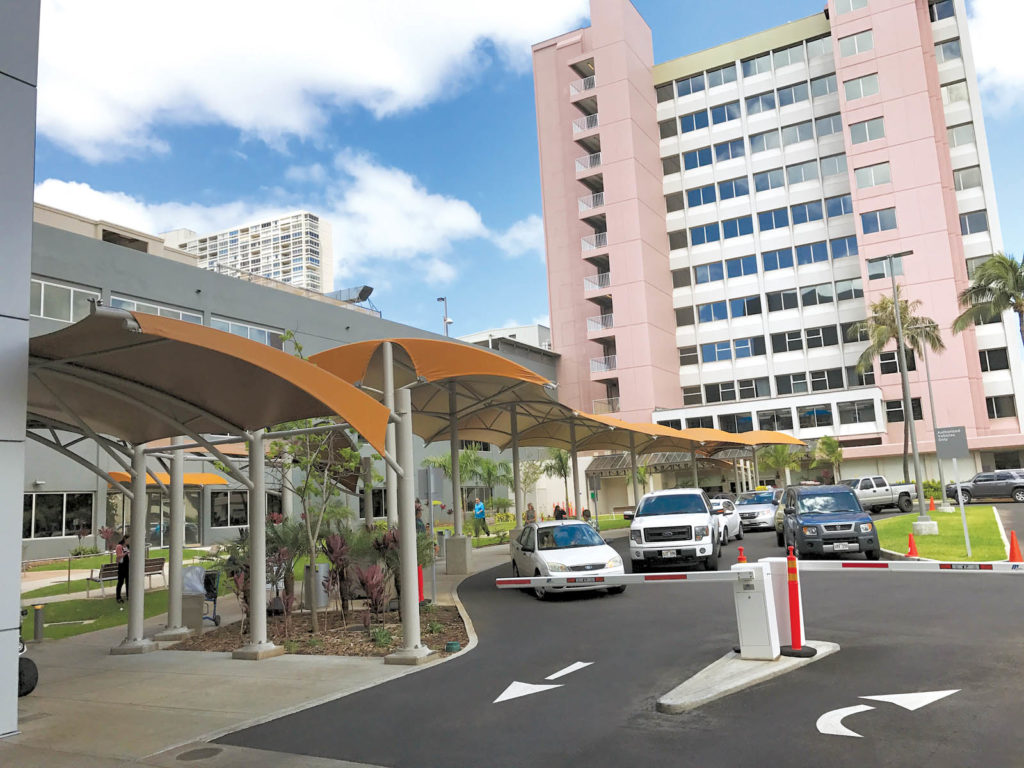
Among other strategies, umbrellas and awnings are over-engineered and built to withstand wind gusts. Frames are over-designed, using fully welded joints and stainless steel fasteners. A structural engineer is kept close at hand. Low-warranty fabrics are avoided, since even those warrantied for five years will need replacing in less time. The company has also “given up on” tracked zipper or keder shade curtains, opting to use its line of wire-guide and/or rope-and-pulley vertical curtains instead.
“Most often wind will be blowing when a customer decides to open or close a curtain,” Barnes explains. “When the fabric goes into a load condition, its zipper or keder will become bound in the track due to friction. If already deployed, the keder or zipper can rip from the main panel or even rip the roller tubes from the wall. If deployed when retracted, the zipper or keder becomes bound, causing the fabric to clog up at the top of the tracks.”
Protection and comfort solutions
Areas of Florida must contend with similar challenges, most consistently sun and heat. Additionally, the region is sometimes battered by strong, even gale-force, winds and hurricanes. Sunmaster of Naples Inc.—an aluminum and canvas fabricator that designs/creates custom architectural products like awnings, railings, pergolas and more—wanted a screen that wouldn’t blow out of the tracks in higher winds or sag in the center requiring re-tensioning, says Jeff Barkin, dealer representative for Titan Screen. The result was a proprietary retractable zipper track screen system, Titan Screen®, targeting southwest Florida’s upscale housing market.
The company achieved this by redesigning the zipper track and using an extremely large zipper. The screen protects against UV rays, wind, rain, snow and insects, although this depends on the mesh selected. Options include Textilene® 80, 90 and 95 (solar, wind and rain protection) and Super Screen® (insect protection).
Titan Screen isn’t an extreme-storm protection product, says Barkin. Rather, it’s designed to increase the comfort level of outside spaces. This became essential as COVID-19 sent people fleeing the indoors, and it’s a desire that persists.
“For example, with a tightly woven screen mesh, like solar 95, a customer could employ a space heater and keep a patio comfortable all winter,” he says. “For intense UV rays, solar 90 will block 90 percent of those rays, protecting furnishings and decor as well as any people sitting in that space.”
Barkin says sun protection is the biggest concern in the West, while in the Midwest and Northeast, it’s primarily keeping insects at bay. In the Southeast, it’s about both weather and insect protection.
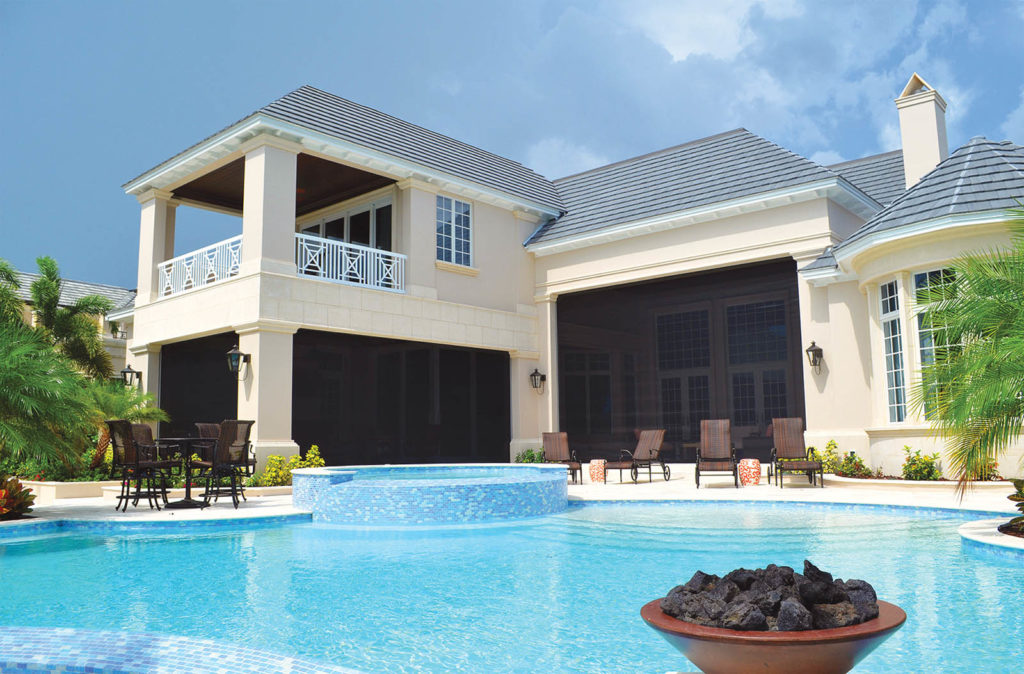
Elemental protection
Robert Martensson, owner of Sunair® Awnings and Solar Screens, says people are looking for denser, less open fabric for more protection against sun, glare and weather. Located in Jessup, Md., the company manufactures commercial and residential retractable shading systems (patio awnings, solar shades, exterior zippers shades) as well as pergola awnings, adjustable motor louvered roofs and more.
“Mesh zipper screens are seeing high demand nationwide; they’re taking over the market in certain areas of the country,” he says. “We’re seeing higher residential demand in the Southeast and Southwest. But the commercial use of these zippered mesh screens is also on the upswing as outdoor dining has expanded. They’ll block some rain but also let some air through, which is attractive in warmer climates.”
Non-mesh, clear-film plastic zippered screens are also popular in colder climates. For these, he looks for low-stretch, high-performance vinyl fabric with clear-film plastic welded into the fabric.
“The window film and the PVC fabric are welded together with a bar welder. The vinyl fabric is Ferrari 502 or 602, which is a Precontraint® weave and very dimensionally stable,” he explains. “The window film isn’t stable at all since it is PVC and doesn’t have a scrim woven into it. This is why you need a border around the perimeter of the window to stabilize the fabric curtain cover.” (For mesh fabric screens, Martensson uses a variety of brands, such as Twitchell™ Nano 95, RecScreen® and Ferrari Soltis® 86.)
The perimeter should be as large as possible to stabilize the fabric when it rolls up and down, he explains. At the same time, since these windows can adhere to themselves when rolled up, smaller ones often prove a better, less sticky, option. These screens can also be affected by extreme heat and cold, so it’s best not to operate them in this type of weather. Still, the colder the weather, the more necessary a solid PVC.
Barnes uses Ferrari Soltis products, especially the 502, among others. He limits acrylics to small umbrellas and awnings. Because the company has not found a weldable tape that won’t fail in Hawaii’s weather conditions, it “almost exclusively” sews the acrylic fabrics (Tropical J’s tries to limit acrylic use to areas where seam leaking won’t cause a problem).
“We also tend not to use acrylics where a great deal of tension will be applied to install the fabrics,” he says. “And since developers and building owners are sensitive to maintenance costs, we also tend to avoid any fabrics that have less than 10-year warranties.”
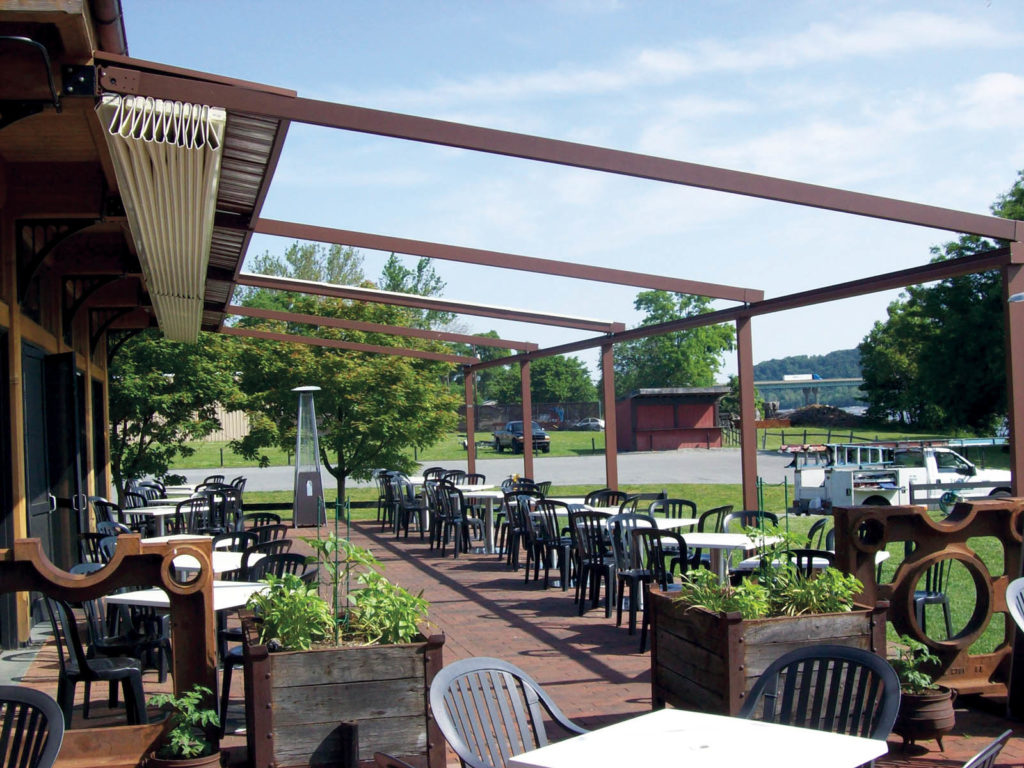
Weather propels demand
Barnes says restaurant and hotel owners are recognizing that uncovered dining tables don’t make money, sparking sales of heavier-duty umbrellas.
“Cheap, weak umbrella poles, for instance, easily break and snap and are a major liability to owners, especially when they start tumbling down Kalakaua Avenue in Waikiki,” he says. “The spaces are also becoming more upscale, requiring a much higher degree of attention to finishes.”
Martensson is noticing surging interest in pergolas coming from both commercial and residential customers.
“You can put a motorized fabric roof over it or an adjustable motorized louvered roof and add roll-down screens on the sides and you have protection from the weather when you need it,” he says. “So rather than building a structure with a permanent roof, people are doing pergolas you can open up to the stars when the weather is good. In some parts of the country where use is going to be year-round, they do have to go with a permanent roof structure, but pergolas are quickly becoming popular.”
As for fabric and technology advancements, Barkin cites the availability of wider-width fabrics as a positive for Titan Screen.
“Not only does the wider fabric decrease the need of visible welds at higher heights, but this also decreases labor costs and waste,” he explains. “The addition of electronic obstacle detection in the motors was also a huge advancement, decreasing service issues by as much as 90 percent.”
Prior to this technology, an object or even the wind could interfere with the screen’s deployment, causing it to halt while the motor continued winding until stopped by the user, potentially damaging the screen, he says.
Barkin is looking forward to solar-powered motors.
“While not yet available with a high enough torque to lift Titan Screen’s weighted bottom bar, motor manufacturers are in development of higher-torque solar motors and should be hitting the market with them soon.”
The clamor for fabric products—shades, umbrellas, pergolas and so on—that enable people to enjoy outdoor spaces while staying protected and comfortable is only going to increase as climate change accelerates. Additionally, items like retractable screens can also make indoor areas more livable while significantly reducing cooling/heating costs, further propelling demand as awareness over these benefits grows and the need for solutions intensifies, representing strong opportunity for all manner of fabricators and manufacturers in this market.
Pamela Mills-Senn is a writer based in Seal Beach, Calif.
SIDEBAR: Protective Skins
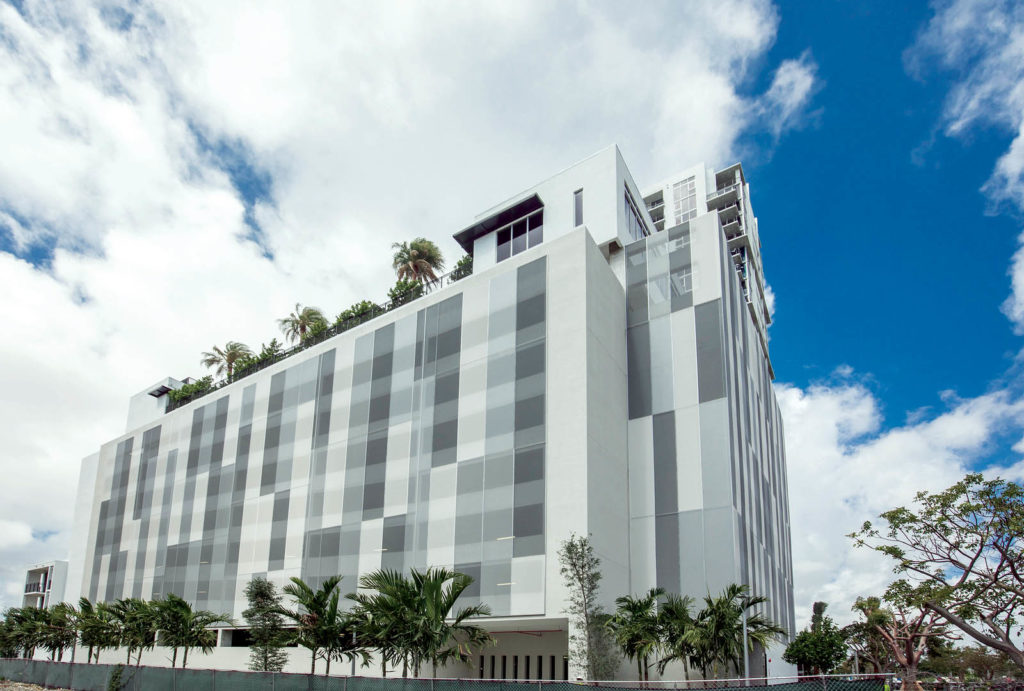
With U.S. headquarters in Merriam, Kan., and worldwide headquarters in Auckland, New Zealand, Structurflex LLC designs, engineers, fabricates and installs tensile membrane structures, also providing cost-effective, decorative tensile mesh facade structures to architects, general contractors and building owners through its business branch, FlexFacades, says Paul Snustead, director of Facades.
“FlexFacades provides an economical shading or screening system on a facade of a building or parking garage using exterior-grade tensile fabric mesh, membrane or clear foil/film,” he explains. “These tensile materials are framed and tensioned by a specialized aluminum extrusion system, either surface-mounted or incorporated structural steel standoffs and embeds.”
A project done for Ohio’s University of Cincinnati Gardner Neuroscience Institute involved a ventilated, second-skin screen intended to reduce solar heat and the heat island effect, reduce glare, lower internal heat gain and protect occupants from UV rays as well as from extreme winter winds—like putting a jacket on a building, says Snustead.
“We used our FlexFacades Decorative Cladding Screens on an undulated structural steel framework that hung off 3 feet, 6 inches of the face of this all-glass curtain wall system,” he says. “Structurflex engineered and installed the entire system outboard of the building.” (Company literature describes this as a 30,000-square-foot coated PES ventilated mesh facade functioning as a sunshade.)
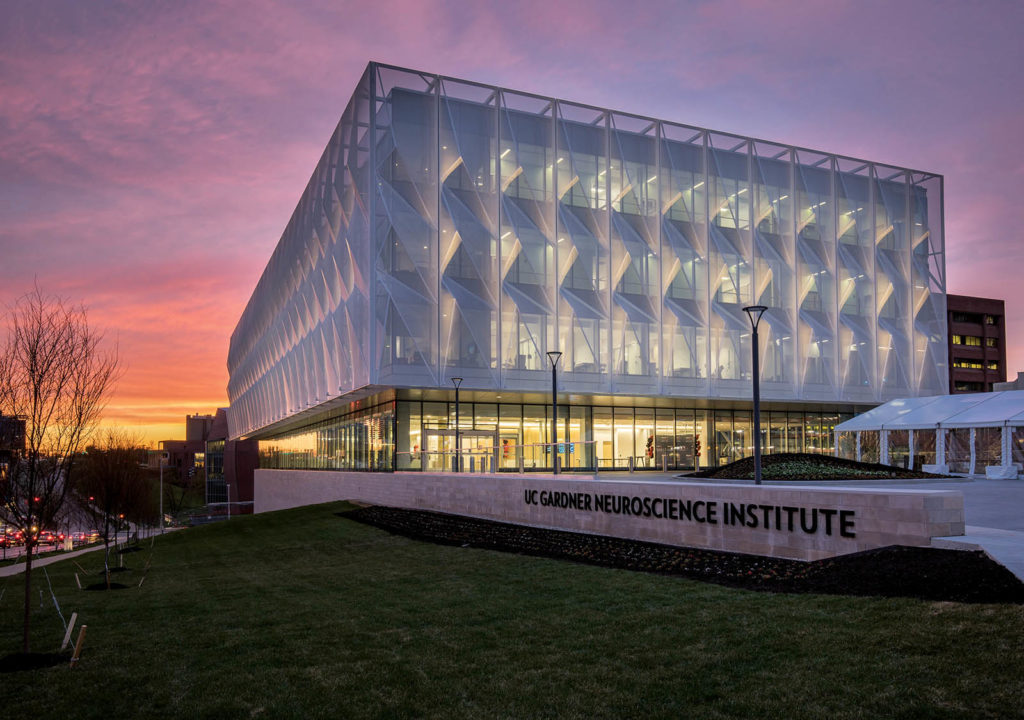
A second project involved the parking garage of the luxury Miami, Fla., apartment building Yard 8 Midtown. Objectives included creating an open feel in the garage while providing a cover that would protect it from heat and direct sun and could also tolerate extreme wind speeds, says Snustead. A FlexFacade screening system of tensile mesh, structural steel standoffs and aluminum extrusions was deployed, covering approximately 35,000 square feet. Different colored mesh was used to align with the architect’s vision and to provide interest. The solution also eliminated the need for mechanical ventilation.
As for where the market opportunities lie, given that extreme weather and the desire for comfort are going to persist, Snustead mentions solar technology.
“It’s getting better,” he says about the technology. “We look forward to implementing solar facade skins that also collect the sun’s energy as it becomes financially feasible and readily available for our clientele.”

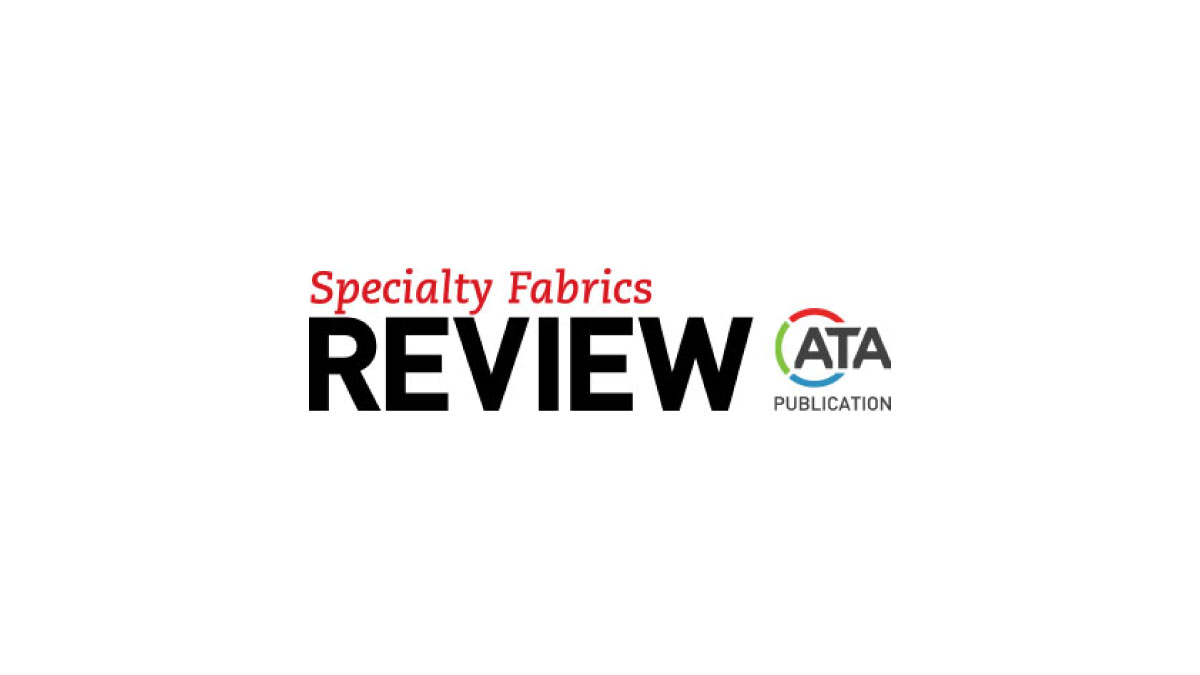


Leave A Comment